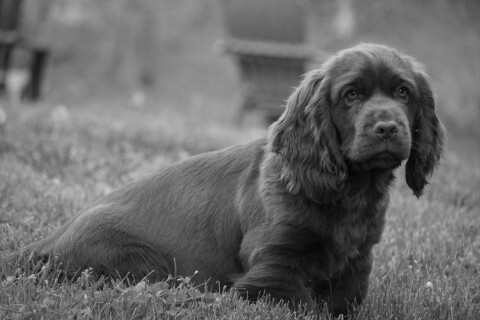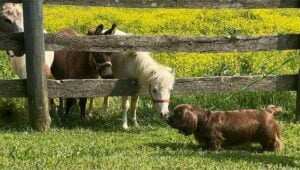
The Sussex Spaniel
Explore the unique traits and misconceptions of the rare Sussex Spaniel, the gentleman’s hunting dog with a lively field presence.
Home » Meet The Breeds » Sussex Spaniel
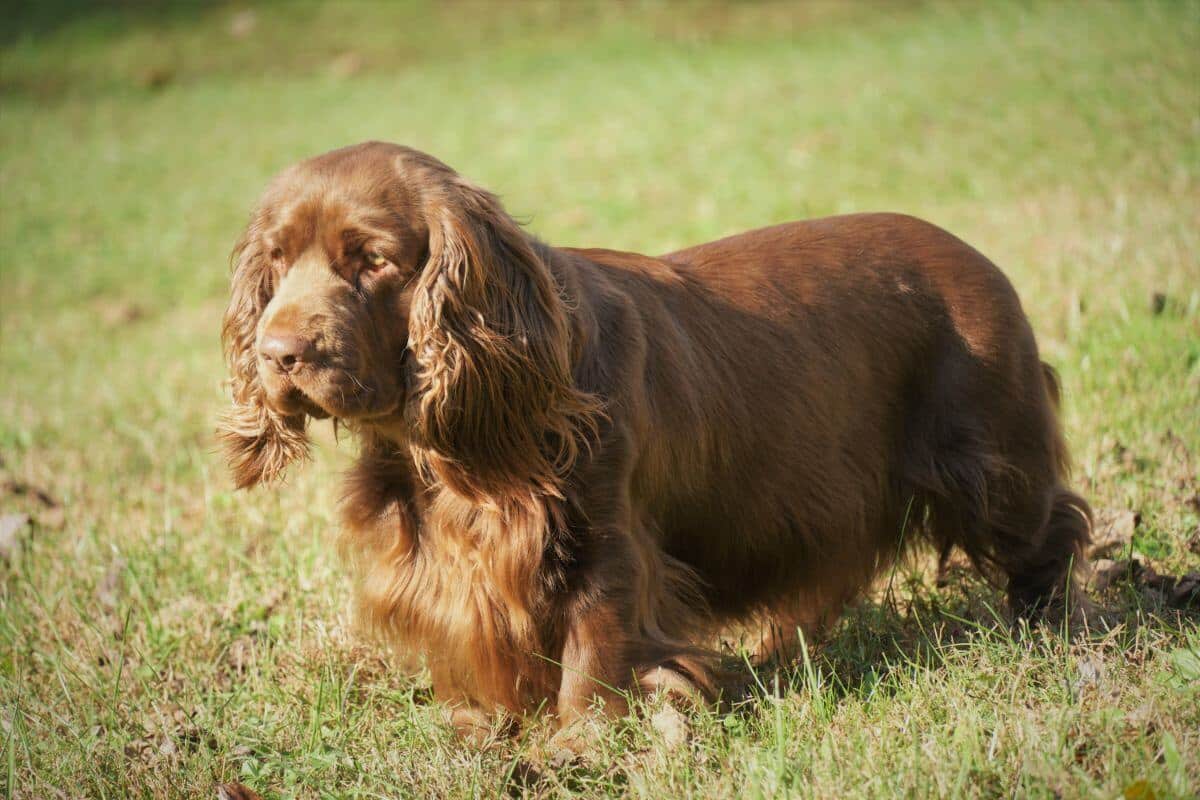
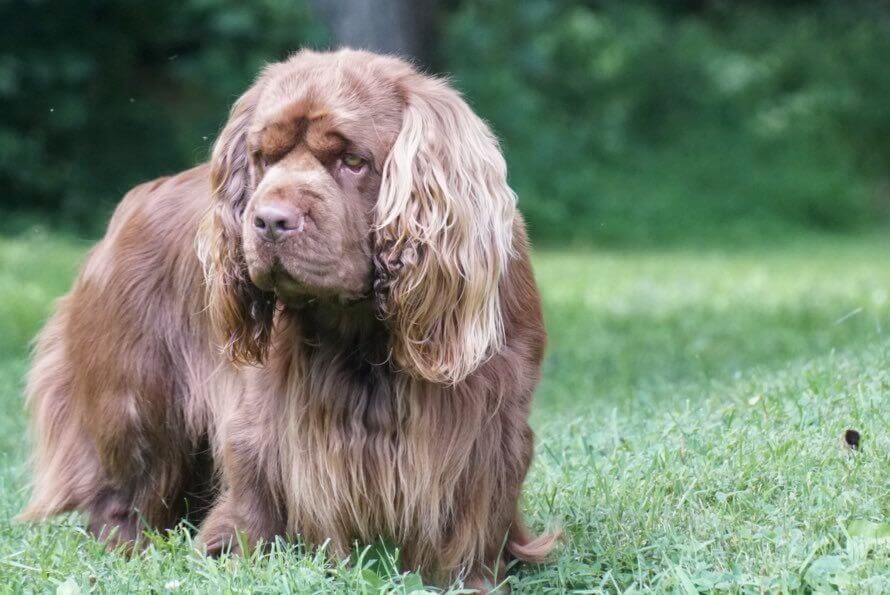
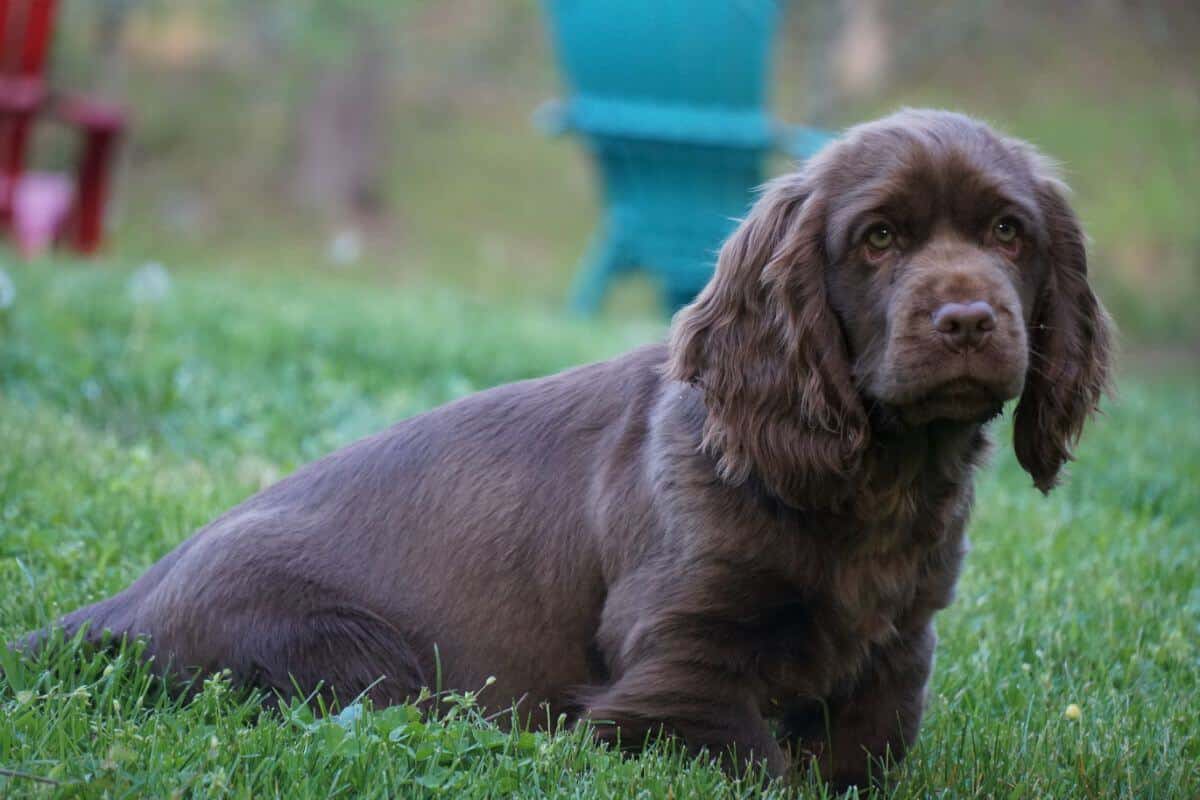
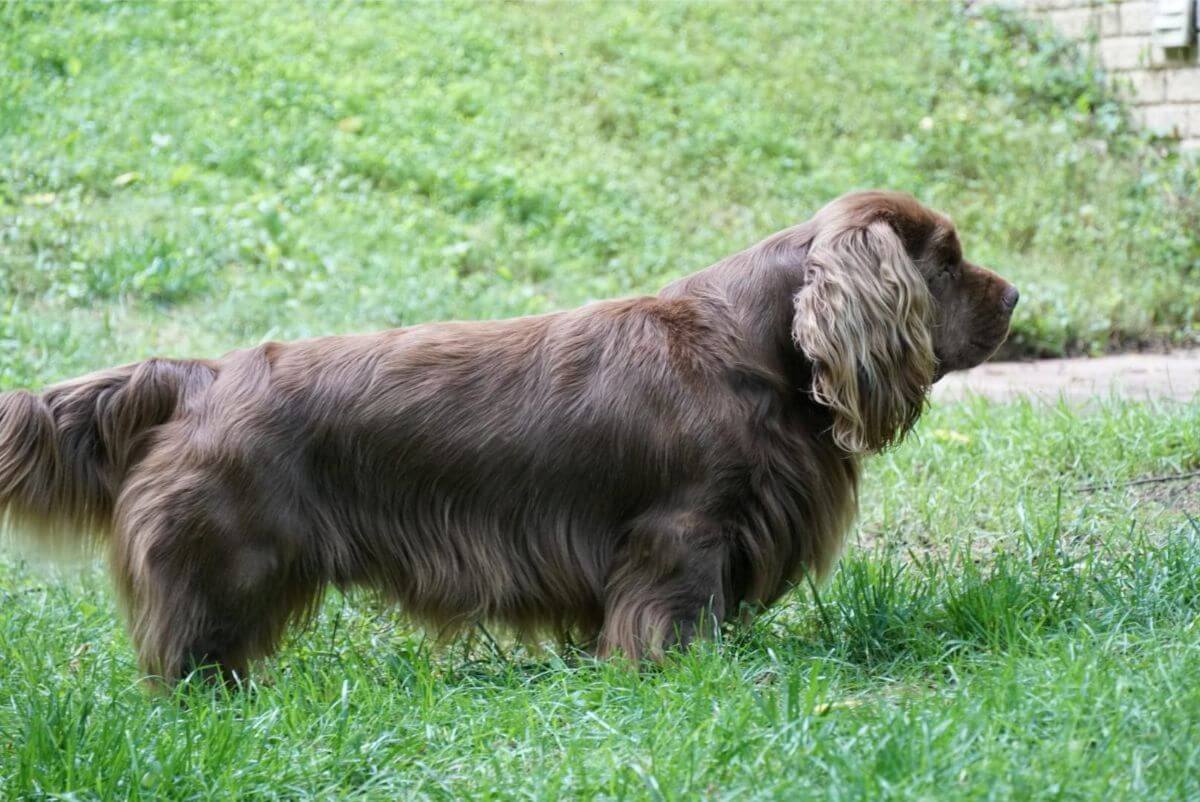
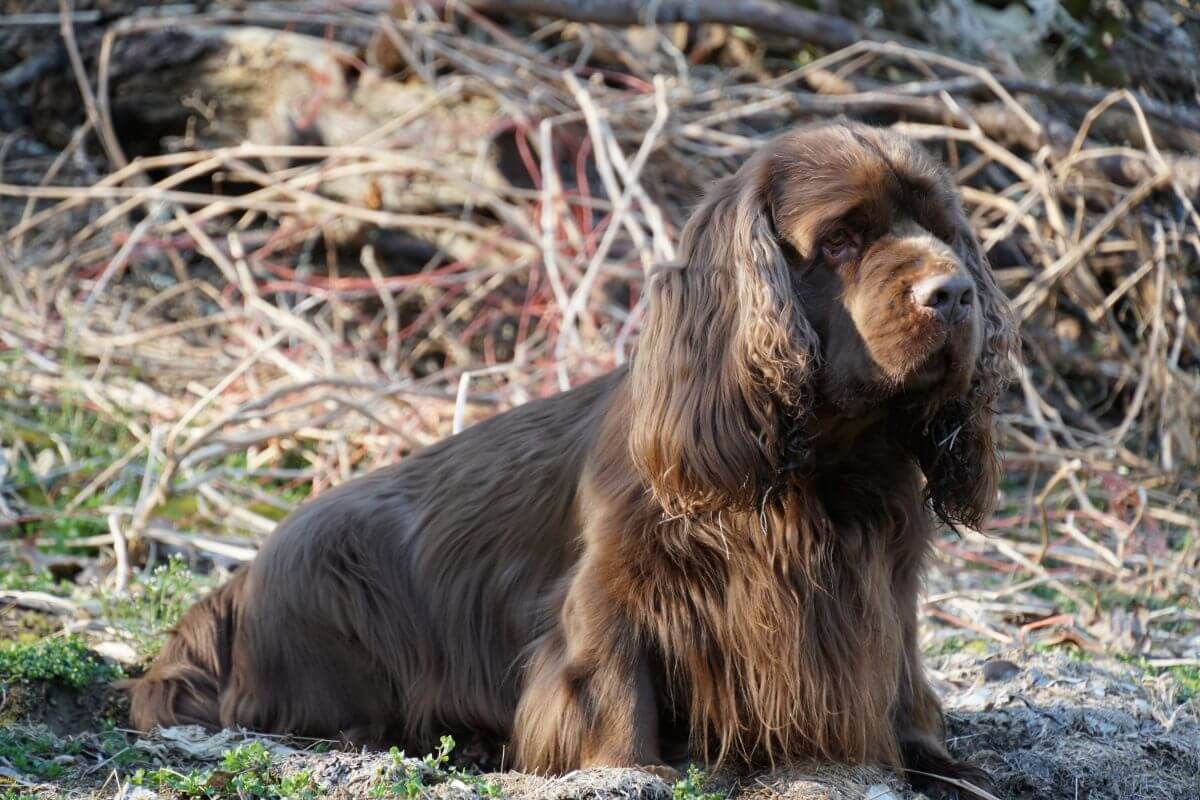
The Sussex Spaniel is a rare and distinctive breed, known for its long, low-slung body and rich golden liver-colored coat. Bred as a slow-paced hunting companion, this spaniel excels at flushing and retrieving game in dense cover. Its calm demeanor and endearing personality make it a cherished companion for hunters and families alike.
Sporting
13 – 15 inches
35 – 45 pounds
13 – 15 years
| Country of Origin | England |
|---|---|
| Bred For | Slow-Paced Hunting |
| Known For | Golden Live Coat, Somber Expression, Friendliness |
| Popularity | Low |
| Temperament | Friendly, Cheerful, Tractable |
| Activities | Hunting, Hiking, Conformation Shows, Dog Sports |
The Sussex Spaniel originates from England, where it was developed in the early 19th century as a specialized hunting dog in densely covered terrain. The breed was named after the county of Sussex, a region known for its hedgerows and wooded areas. This environment demanded a dog with determination, strength, and a keen nose. The breed’s development is credited to Mr. Fuller of Rosehill Park, who selectively bred Sussex Spaniels for their ability to work methodically and tirelessly in thick undergrowth.
Unlike other spaniels that work with speed and high energy, the Sussex was encouraged to be slower and more deliberate in its movements, making it highly effective in dense vegetation. This, combined with the breed’s distinctive vocalizations, allowed hunters to keep track of their dogs even when out of sight.
The Sussex faced extinction during the World Wars due to declining interest in hunting and the economic hardship of wartime. A small handful of dedicated breeders worked diligently to preserve the breed, with key efforts led by Joy Freer in England who maintained it through the 1940s.
The Sussex Spaniel was one of the original nine breeds recognized by the American Kennel Club (AKC) in 1884; however, despite its rich history, this affable breed remains one of the rarest of all purebred dogs today.
The Sussex Spaniel typically stands about 13 to 15 inches tall at the shoulder and weighs between 35 and 45 pounds.
The Sussex Spaniel is a long-bodied, short-legged breed with a distinctive rectangular silhouette. Its sturdy frame features strong, well-boned limbs that ensure balance and functionality in the field. The breed’s muscular and well-developed body emphasizes substance without being overly coarse or unnecessarily heavy.
Texture: The Sussex Spaniel’s coat is dense, flat, and abundant, providing excellent protection against harsh weather and rough terrain. The texture is neither overly silky nor wiry, with feathering on the legs and tail that is smooth and moderate in length. The coat’s thickness and texture are designed to shield the dog while hunting in dense cover.
| Standard Color | |
|---|---|
| Golden Liver | y |
No markings are recognized.
The Sussex Spaniel’s tail is traditionally docked to about 5 to 7 inches in length, giving it a distinct appearance. In countries where the practice is not permitted, the natural tail is of medium length, carried level with the back, and covered in moderate feathering. Whether docked or natural, the tail is set low with a carriage that complements the breed’s long and low silhouette.
The Sussex Spaniel is a loyal and adaptable companion, blending its hunting heritage with a calm, affectionate (and sometimes silly) demeanor. However, potential owners should be aware of the breed’s specific needs, from health considerations to personality quirks, to make sure this unique and gorgeous purebred is a good match.
The Sussex Spaniel is generally a healthy breed with a typical lifespan of 13 to 15 years. Regular vet check-ups and preventative care can help this massively-built spaniel live a long and happy life.
The Sussex Spaniel may be predisposed to a few health conditions, including:
The Sussex Spaniel is a gentle breed, known for its loyalty to its human companions and its affection towards strangers. While the breed is patient and kind, the Sussex can be sensitive and may not thrive in environments where it will be left alone for extended periods. The calm demeanor of the breed can make this dog a suitable choice for novice handlers, although its independent streak might occasionally require a firm but loving approach.
Sussex are typically good with other dogs and can adapt well to living with young children, provided early socialization is given and proper introductions are made. Friendly towards everyone they meet, they possess a reserved charm rather than an overly exuberant personality. Their quiet confidence and deep attachment to their family make them an excellent choice as a companion for a wide variety of people.
The Sussex Spaniel requires a high-quality, balanced diet tailored to its age, size, and activity level. Puppies benefit from meals that are rich in nutrients to support their growth, typically divided into three meals a day until they’ve reached adulthood.
Adult Sussex generally thrive on two measured meals per day, totaling about 1.5 to 2 cups of food daily, depending on their activity level and metabolism. Monitoring weight is crucial, as the breed’s compact frame can make them prone to obesity. Feeding schedules, combined with regular exercise, help them maintain a healthy physique.
Training a Sussex Spaniel is a rewarding experience, as these dogs are intelligent and eager to please, though they may exhibit occasional stubbornness. Positive reinforcement methods work best, as they respond well to treats, praise, and gentle encouragement. Early socialization and basic obedience training are essential to make sure they grow into well-mannered companions as adults.
The Sussex has a moderate tendency to bark, often using their distinctive “voice” when excited or alerting to something unusual. They possess a strong nose and natural hunting instincts, so training should also focus on managing wanderlust and channeling their focus appropriately.
The Sussex Spaniel has moderate exercise needs, requiring daily walks and opportunities for play to keep it physically and mentally fit. While not as high-energy as some of the other spaniel breeds, Sussex thrive with consistent activity that will maintain a healthy weight and prevent boredom. The breed’s hunting background means these dogs enjoy activities that engage their natural instincts, such as tracking or retrieving games.
| Energy Level | Moderate |
|---|---|
| Exercise Requirements | 2 Hours/Day (Minimum), Daily Walks, Daily Exercise, Playing with Other Dogs |
This Sussex is best suited for a home where it can enjoy a securely fenced yard or regular outdoor adventures, as the breed’s keen nose could easily lead it astray if unsupervised. Despite a calm demeanor indoors, these dogs benefit greatly from mental stimulation and interaction with their human companions all day, every day.
The Sussex Spaniel’s dense, flat coat requires regular grooming to keep it in top condition. Weekly brushing helps to prevent matting, particularly in feathered areas such as the legs, ears, and tail, while also controlling shedding. During seasonal changes, more frequent grooming may be necessary as shedding increases.
| Coat Type | Abundant, Flat or Slightly Wavy, Feathered |
|---|---|
| Grooming Requirements | Weekly Brushing, Occasional Bathing, Routine Ear Cleaning, Periodic Nail Trimming, Regular Tooth Brushing |
The long ears of the Sussex need regular inspection and cleaning to prevent infections, as the breed is prone to ear issues. Routine bathing every few months, or as needed, keeps the coat clean and healthy. Nail trimming, teeth brushing, and checking for skin issues should also be part of the grooming regimen.
The Sussex Spaniel adapts well to various living situations, including apartments, provided they receive adequate daily exercise. However, the breed’s low energy indoors and need for companionship make them better suited to homes where they are not left alone for extended periods. Sussex enjoy spending time with their family and thrive in a close-knit environment.
This Sussex handles cool weather well, thanks to its dense coat, but these dogs may need extra care in hot climates, as their shorter legs and sturdy build make them prone to overheating. This rare and lovable breed is happiest when living as part of a family that understands and accommodates its unique qualities as well as its emotional needs.
Sussex Spaniel puppies are really appealing with their friendly faces and playful demeanor, but they require proper guidance that will encourage them to become well-adjusted adults. Known for their curiosity and occasional mischievousness, they benefit from patient, attentive care as they explore the world around them. Early socialization, consistent training, and structured routines are vital during the formative months of life.
Caring for a Sussex Spaniel puppy involves providing a nurturing environment that supports growth and emotional well-being. Every puppy requires a high-quality, age-appropriate diet divided into three to four meals per day, with fresh water always available. Monitoring the pup’s food intake is important to prevent overfeeding, as this breed can be prone to weight gain.
Socialization during the early months is crucial to help the Sussex puppy develop confidence. Introducing new people, pets, and environments at this time can foster a more well-rounded personality. Positive reinforcement training, starting with simple commands like sit and stay, sets the foundation for good behavior.
Housetraining requires consistency with this breed, with a regular schedule established for bathroom breaks and rewards given for each success. Providing safe, engaging toys will satisfy the puppy’s curiosity and chewing instincts while preventing damage to shoes and household furnishings.
Regular veterinary care, including vaccinations, deworming, and health checks, is essential for the Sussex Spaniel puppy. Likewise, early grooming routines, such as ear cleaning, coat brushing, and nail trimming, will help to keep the pup as healthy on the outside as it is on the inside.
The Sussex Spaniel is recognized by the world’s leading registries and kennel organizations, which categorize the breed into a specific Group based on its unique characteristics. This breed is recognized worldwide under the following Group designations:
| Organization | Group Designation |
|---|---|
| AKC (American Kennel Club) | Sporting |
| UKC (United Kennel Club) | Gun Dog |
| CKC (Canadian Kennel Club) | Sporting Dog |
| ANKC (Australian National Kennel Council) | Gundogs |
| RKC (The Royal Kennel Club) | Gundog |
| FCI (Fédération Cynologique Internationale) | Group 8: Retrievers, Flushing Dogs, Water Dogs Section 2: Flushing Dogs |
The ideal Sussex Spaniel is described by a Breed Standard that is approved by each of the world’s leading registries and kennel organizations. The Breed Standards for this breed may be found in the following links:
| Organization | Breed Standard |
|---|---|
| American Kennel Club | AKC Sussex Spaniel Breed Standard |
| United Kennel Club | UKC Sussex Spaniel Breed Standard |
| Canadian Kennel Club | CKC Sussex Spaniel Breed Standard |
| Australian National Kennel Council | ANKC Sussex Spaniel Breed Standard |
| The Royal Kennel Club | RKC Sussex Spaniel Breed Standard |
| Fédération Cynologique Internationale | FCI Sussex Spaniel Breed Standard |
Rescue groups are invaluable in rehoming any Sussex Spaniel in need and with assisting loving families that are prepared to welcome one of these engaging dogs into their home. These organizations are committed to supporting the welfare of the breed and assisting any dog that is in need of assistance.
Yes, Sussex Spaniels shed moderately throughout the year. Regular grooming helps to manage shedding and keeps the breed’s beautiful coat in good condition.
No, Sussex Spaniels are not hypoallergenic. Their shedding and dander can trigger allergies in sensitive individuals.
Sussex Spaniels typically live between 13 and 15 years. Proper care, including regular veterinary check-ups and a healthy lifestyle, can support their longevity.
Yes, Sussex Spaniels are excellent family dogs due to their gentle, affectionate nature. They are particularly well-suited for families that can provide consistent companionship. Sussex often sit up on their haunches and beg for attention.
They are known for their distinctive “voice” and may bark to alert their companions or express their wants and needs. While not excessive barkers, early training can help to manage their vocal tendencies.

Explore the unique traits and misconceptions of the rare Sussex Spaniel, the gentleman’s hunting dog with a lively field presence.
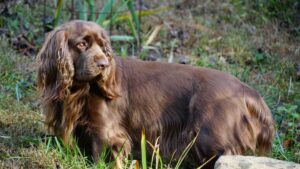
Explore the evolution of the Sussex Spaniel standard and how the AKC revised its points and faults system for judging.
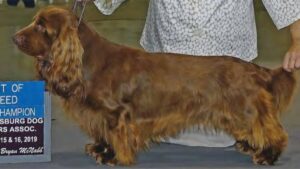
Committed to upholding the AKC Standard for Sussex Spaniels, preserving historical consistency and breed integrity for future generations.

Judging the Sussex Spaniel: Learn key breed characteristics, including balance, proportion, and the “Six L’s” to guide your evaluation.

The Sussex Spaniel’s “sad” expression is functional for hunting and adds to their charm, making them both practical and irresistibly cuddly.

Explore a journey through nostalgia as spring cleaning unveils forgotten treasures from a lifetime in the world of dogs. Memories await!

Doug Johnson on 40 years of breeding and judging English Toy, Clumber, Sussex, Welsh Springer Spaniels, and Kooikerhondje.

Katie Tuttle is the breeder behind Brass Lite Sussex Spaniels. Read about the kennel’s beginnings, puppies, and much more!
The best way to ensure a long and happy relationship with a purebred dog is to purchase one from a responsible breeder. Not sure where to begin?
Contact the National Parent Club’s Breeder Referral Program, which is listed on the AKC Breeder Referral Contacts page.
